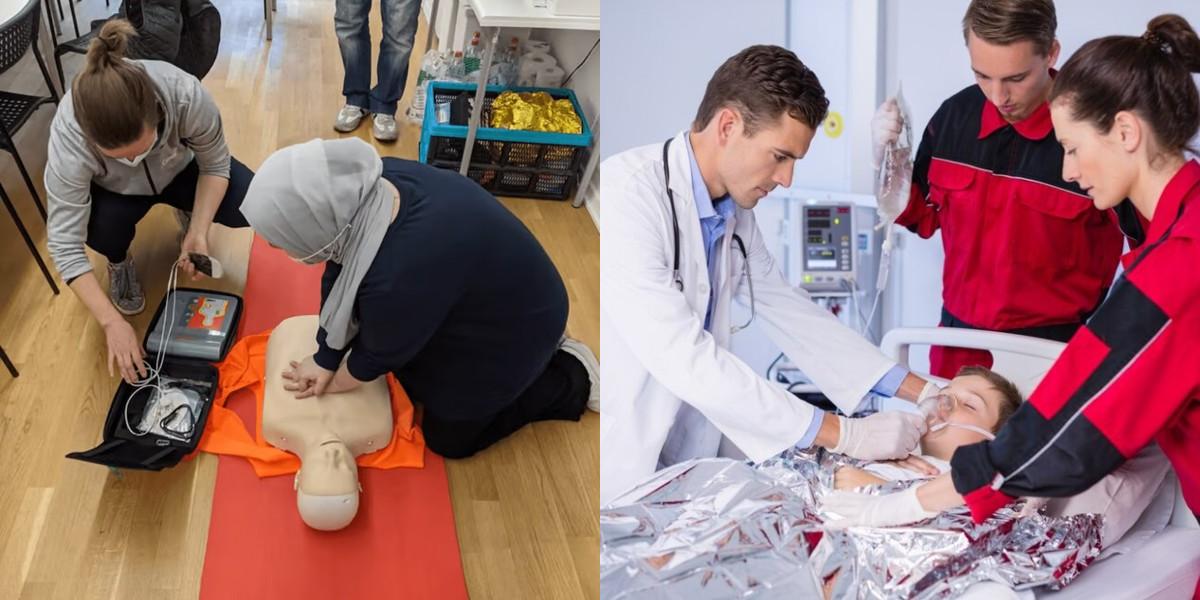CPR-BLS vs PALS

Key Points:
- CPR-BLS focuses on basic life support, while PALS deals with advanced pediatric life support.
- CPR-BLS pay is generally lower than PALS, as PALS requires more specialized skills.
- CPR-BLS jobs are more widely available, while PALS jobs are more specialized.
- CPR-BLS training is often available online, while PALS training is typically in-person.
- CPR-BLS training is generally less expensive and shorter than PALS training.
When it comes to emergency medical training, there are several options available. Two of the most common certifications are CPR-BLS and PALS. Both of these certifications are crucial for healthcare professionals, but they have different focuses and requirements. In this blog post, we will explore the differences between CPR-BLS and PALS, including job descriptions, education and training requirements, and career outlooks.
CPR-BLS
- Classroom instruction on the basic techniques of CPR
- Hands-on practice to develop proficiency in chest compressions, rescue breathing, and AED use
- Certification typically obtained through a one-day training course
PALS
- Several days of classroom instruction on pediatric assessment, basic life support, respiratory emergencies, and cardiac emergencies
- Hands-on practice to develop proficiency in medication administration, advanced airway management, and other pediatric-specific skills
- Certification typically obtained through a multi-day training course, including a written examination and skills demonstration
CPR-BLS vs PALS: Career Outlook and Salary
Both CPR-BLS and PALS certifications can open doors to a variety of healthcare careers. However, the career outlook and salary potential may vary depending on the specific role and workplace:
CPR-BLS
- Healthcare professionals certified in CPR-BLS may find employment in hospitals, clinics, nursing homes, and other healthcare settings.
- Common job titles include registered nurses, emergency medical technicians (EMTs), and paramedics.
- According to the Bureau of Labor Statistics, the median annual wage for EMTs and paramedics was $35,400 in May 2020.
PALS
- Healthcare professionals certified in PALS may work in pediatric hospitals, pediatric clinics, and other settings that specialize in pediatric care.
- Common job titles include pediatric nurses, pediatricians, and pediatric emergency medicine physicians.
- According to the Bureau of Labor Statistics, the median annual wage for registered nurses was $75,330 in May 2020.
Final Thoughts
In conclusion, both CPR-BLS and PALS certifications are essential for healthcare professionals who work in emergency medical settings. While CPR-BLS focuses on providing immediate care to individuals of all ages, PALS specifically addresses the unique needs of pediatric patients. The education and training requirements for each certification differ, as do the job descriptions and salary potential. Ultimately, the choice between CPR-BLS and PALS depends on an individual's career goals and the specific population they wish to work with.
Dreambound extends its programs to diverse locations. Delve deeper into information about these two vocations by visiting:

Vduani Martinez is a part of the Growth team at Dreambound. She creates and fixes workflows and automation to guarantee seamless operations. On top of that, she manages databases to ensure all information is up to date. Vduani is a licensed Electronics Engineer who loves coffee and is a travel enthusiast. Out of the office, she enjoys going on road trips and discovering new cafes and restaurants.




